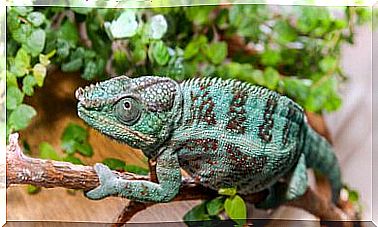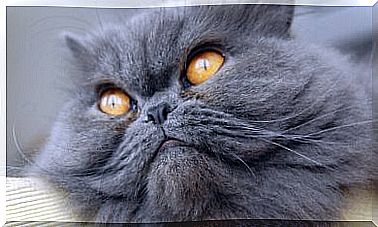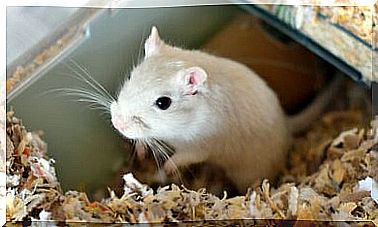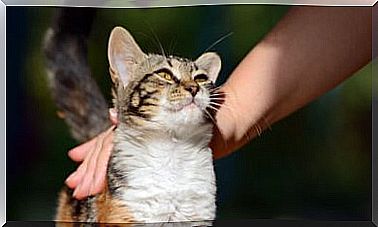Brown Recluse Spider: Feeding And Characteristics
The brown recluse spider or violin spider is a highly feared species for its powerful necrotic toxin. Although their bites are not so frequent due to their shy nature, almost 15% of attacks on people usually cause damage at a systemic level. Next, we will learn a little more about this species and the reasons why its venom is so powerful.
Physical characteristics and taxonomy of the brown recluse spider
The brown recluse spider ( Loxosceles hermitaña ) is a small species of arachnid belonging to the Sicariidae family . Their diminutive size does not coincide with their fearsome fame, since these spiders hardly exceed 20 millimeters in length ; some specimens can measure no more than 6 millimeters.
Its appearance is also very discreet compared to the other poisonous spiders. Its body is thin and well outlined, with a marked ‘waist’ between the cephalothorax and the abdomen (similar to a violin). It is dominated by a brownish tone slightly lighter than a brownish brown.
There are also no specific color patterns on its abdomen or on its legs, which lack spiny hairs. The most observed colors are black, gray, cream or brown; on its abdomen we find a lining made up of fine and very soft hairs.
Like its ‘relatives’ of the genus Loxosceles , the violin spider has three pairs of eyes (six eyes in a dyad arrangement). One pair is centered on your head and the other two are arranged in parallel. It is a peculiar characteristic among arachnids, present in few species.
Habitat and diet of the violin spider
The brown recluse spider is a species native to North America. Its population extends throughout almost the entire US territory, although it reaches northern Mexico. However, its greatest concentration is in the southeastern United States.
In general, it lives in darker and more reserved areas, such as between stones and logs or in accumulations of wood and firewood. Although it is rarer, they can also adapt to living inside homes, especially inside closets, shoes, between clothes or near a warm place with low light.
It is a carnivorous animal whose diet is based on the consumption of crickets, mosquitoes, flies, cockroaches and other insects available in its environment. This species maintains nocturnal habits, which only go out in search of their prey at night.
During the day they usually rest and take care of their shelter built with their sticky white or grayish web. Although they are excellent hunters, they can go months without hunting and without feeding, especially during winter or times of low food availability.
Why is the venom of the brown recluse spider so fearsome?
In practice, the most recognized and feared characteristic of recluse spiders is their powerful venom. Their bites can cause a complex symptomatology in the victim’s body that is known as ‘Loxoscelism’, that is, a set of symptoms caused by spiders of the genus Loxosceles.
The powerful hemotoxins in the venom of these spiders cause necrotic wounds in their victims. Thus, the symptoms derived from a bite show two variants: cutaneous loxoscelism and visceral luxoscelism. When the action of toxins is limited to the skin, we are faced with cutaneous loxoscelism.
However, if the venom reaches the bloodstream and reaches other organs, we speak of visceral loxoscelism. These latter cases are much more severe, since they can cause general and irreversible damage to the body.
Symptoms and effects of stings
Among the main symptoms of the bite of this spider, we find: fever, nausea, vomiting, chills, skin rashes, pain in the muscles and joints.
Currently, it is estimated that almost 40% of recluse spider bites end in necrotic wounds, while approximately 14% of victims have systemic or visceral damage caused by their hemotoxins.
For all these reasons, it is essential to go to a medical center after being bitten by a spider or after the appearance of the aforementioned symptoms. When taking walks to rural areas, fields or farms , it is essential to take preventive measures to avoid insect bites and arachnid bites.
In addition to applying the repellent, it is important to wear closed shoes, clothes that protect the skin and avoid entering unknown areas. In the home, optimal light and ventilation will help to ward off the brown recluse spider.









